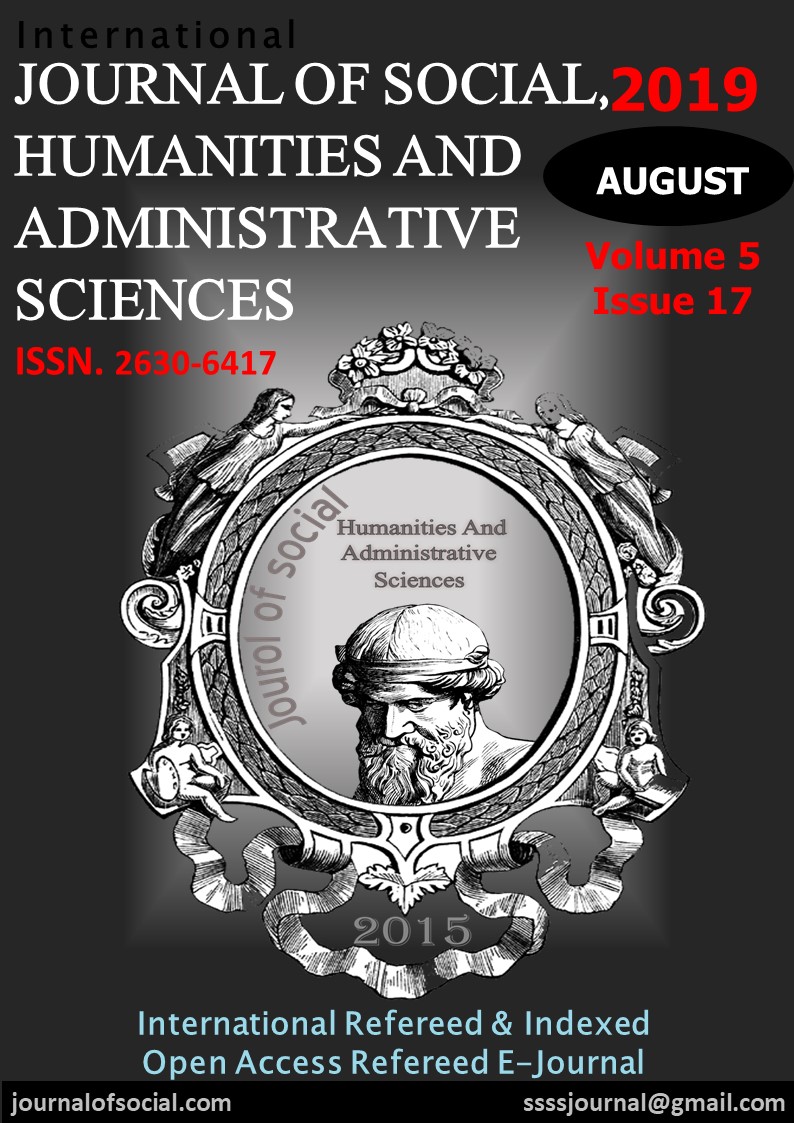Author :
Abstract
Geride bıraktığımız 20.yüzyılda büyük savaşlara, sömürge imparatorluklarının dağılmasına ve sonucunda yeni ulus-devletlerin ortaya çıkışına, teknolojik, bilimsel, ekonomik ve sosyal anlamda önemli gelişmelere, uluslararası sistemdeki devletlerin iki kutup arasındaki güç mücadelesine, terör olaylarına, bölgesel ve küresel entegrasyon hareketlerine şahitlik ettik. Soğuk Savaş’ın sona ermesi ve Sovyetler Birliği’nin dağılması ile Avrasya coğrafyasının kapıları da yeni çıkar ve güç mücadelelerine açılmış oldu. Küreselleşme ile artış gösteren ekonomik ve siyasal entegrasyon hareketleri Avrasya’da uluslararası sisteme entegre olmaya çalışan yeni ulus- devletler üzerine yoğunlaşmıştır. Sadece bölge ülkeleri açısından değil Doğu ve Batı arasındaki entegrasyonun gerçekleştirilmesini sağlayacak kapsamdaki Çin’in İpek Yolu’nu yeniden canlandırma girişimi olan Bir Kuşak Bir Yol Projesi gündeme gelmiştir. Bu proje ile Uzak Doğu’yu Akdeniz’e ve Batı Avrupa’ya bağlayacak güvenli ulaşım koridorlarının inşa edilmesi, küresel ve bölgesel refahın sağlanmasına ve ekonomik kalkınmaya hizmet edecektir. Bir Kuşak Bir Yol Projesi sadece ekonomik amaçlı bir proje olmayıp uluslararasında sosyal ve kültürel zenginlikleri taşıyan, siyasi işbirliği tesis edecek bir proje niteliği taşımaktadır. Bu çalışma betimsel araştırma yöntemi ile hazırlanmış olup Bir Kuşak Bir Yol projesinin ortaya çıkışında etkili olan dinamikler, fırsatlar ve engeller incelenmiş; proje kapsamında yapılmış olan faaliyetler değerlendirilmiştir.
Keywords
Abstract
In the twentieth century we witnessed the great wars, the collapse of colonial empires and the emergence of new nation-states, important developments in technological, scientific, economic and socially, the power struggle between the two poles in the international system, the terrorist events, the regional and global integration movements. With the end of the Cold War and the disintegration of the Soviet Union, the gates of Eurasian geography opened up to new interests and power struggles. Economic and political integration movements that have increased with globalization have focused on the new nation-states in Eurasia trying to integrate into the international system. One Belt One Road Project, which is an initiative of China's revitalization of the Silk Road, which will enable integration between East and West, not only for the countries of the region, has been brought up. With this project, the construction of safe transportation corridors connecting the Far East to the Mediterranean and Western Europe will serve to ensure global and regional prosperity and economic development. One Belt One Road Project is not only an economic project, but also carries the social and cultural richness of nations and establishes political cooperation. This study has been prepared with descriptive research method and dynamics, opportunities and obstacles that are effective in the emergence of One Generation One Way project; activities carried out within the scope of the project were evaluated.
Keywords
- BAĞIRZADE, E. (2014), Azerbaycan-Türkiye Ortak Ekonomik Projeleri ve Bölgesel
- BAĞIRZADE, E. (2014), Azerbaycan-Türkiye Ortak Ekonomik Projeleri ve Bölgesel Yansımaları, Ekonomik ve Stratejik Araştırmalar Dergisi, Sayı: 26.
- BALCI,Z. (2018), Çin’in Yeni İpek Yolu Projesi, İnsamer, Ocak.BECKWITH, I.C. (2011), İpek Yolu İmparatorlukları Bronz Çağı’ndan Günümüze Orta Asya Tarihi, ODTÜ Yayıncılık, Ankara.
- DAVUTOĞLU, A. (2001), Stratejik Derinlik, Küre Yayınları, İstanbul. DÜĞEN, T. (2011), 21.YY’da İpek Yolu, 21. Yüzyıl, Kasım.
- MALASHENOK, V. (2006), Kırgızistan'da Türkiye'nin ve Türkler'in İmajı, Ankara
- MAMMADOV, H. (2014), Büyük İpek Yolu ve Medeniyetler Arası Diyalog, MedeniyetlerGüzergahı İpek Yolu, Ed. Mehmet Bulut, İstanbul Sabahattin Zaim Üniversitesi Yayınları, İstanbul.OVALI, S. (2008), Traceca Projesi ve Türkiye, International Journal of Economic and Administration ve Studies, Yaz, Yıl: İ, Cilt: İ.
- SANDER, O. (2002), Siyasi Tarih 1918-1994, İmge Kitabevi, Ankara.
- TABAKOĞLU, A. (2005), İpek Yolu ve Selçuk- Osmanlı Ekonomileri, Toplu Makaleler- İktisat Tarihi, İstanbul.
- YILDIZDAĞ, C. (2005), VII.-X. YY.'larda İpek Yolu Ticaretinin Türk Tarihine Etkileri, Mimar Sinan Güzel Sanatlar Üniversitesi, Sosyal Bilimler Enstitüsü, Tarih
- http://guneydoguasyacalismalari.com/2017/05/15/ipek-yolu-cinin-kuresel-kalkinma-perspektifi- silk-road-global-development-perspective-of-china/
- https://www.stratejikortak.com/2017/06/batinin-proxy-war-dogunun-bir-kusak-yol-projesi.html https://www.unescap.org/our-work/transport/trans-asian-railway/about





